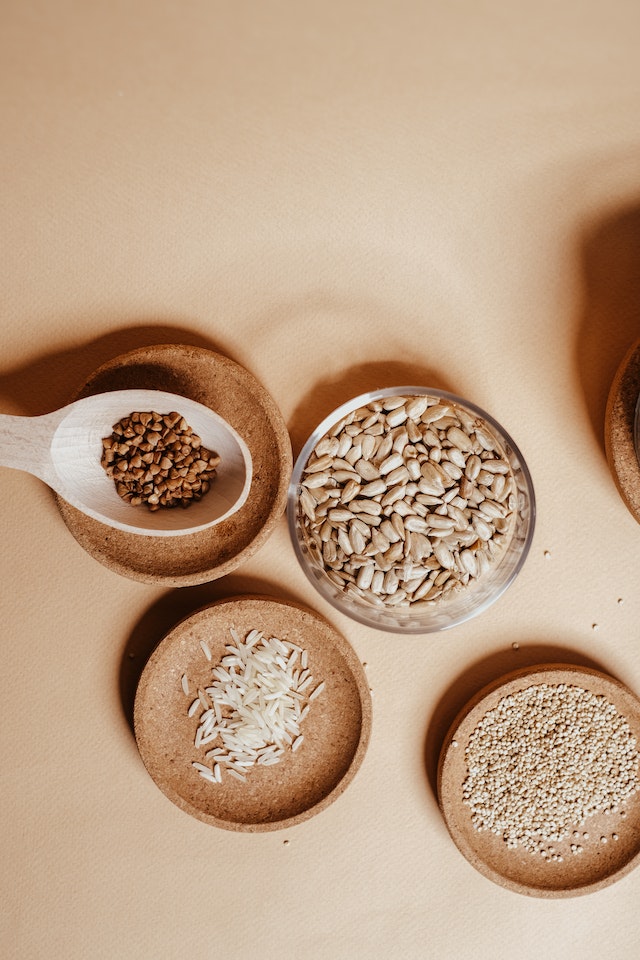
In maintaining a healthy lifestyle, regulating blood sugar levels is crucial. One dietary component that plays a significant role in blood sugar management is fiber. Fiber is a macronutrient found in various plant-based foods, such as fruits, vegetables, whole grains, and legumes. It offers numerous health benefits, including the ability to control blood sugar levels, maintain a healthy weight, and reduce the risk of diabetes, heart disease, and certain types of cancer. In this comprehensive guide, we will explore how fiber regulates blood sugar levels and highlight the top five food sources to incorporate into your diet.
Understanding the Role of Fiber in Blood Sugar Regulation
Fiber is a unique carbohydrate that cannot be digested or absorbed by the body. Instead, it passes through the digestive system relatively intact, providing numerous health benefits along the way. There are two types of fiber: soluble and insoluble fiber.
Soluble Fiber: Soluble fiber dissolves in water to form a gel-like substance in the digestive tract. This type of fiber helps regulate blood sugar levels by slowing down the absorption of glucose into the bloodstream. It also aids in reducing cholesterol levels and promoting heart health. Soluble fiber can be found in foods such as oats, peas, beans, apples, citrus fruits, carrots, barley, and psyllium.
Insoluble Fiber: Insoluble fiber, on the other hand, does not dissolve in water and adds bulk to the stool, promoting regular bowel movements. It helps prevent constipation and keeps the digestive system healthy. Good sources of insoluble fiber include whole-wheat flour, wheat bran, nuts, beans, cauliflower, green beans, and potatoes.
Both soluble and insoluble fiber play essential roles in blood sugar regulation and overall health. By incorporating foods rich in these types of fiber into your diet, you can support stable blood sugar levels and maintain optimal well-being.
The Top Five Food Sources of Fiber for Blood Sugar Regulation
To help you optimize your fiber intake and regulate blood sugar levels effectively, we have compiled a list of the top five food sources rich in fiber. These foods provide a diverse range of nutrients while offering excellent fiber content for blood sugar management.
1. Berries: Nature’s Sweet Fiber Powerhouses
Berries are not only delicious but also packed with fiber, making them an excellent choice for blood sugar regulation. Whether it’s blueberries, strawberries, raspberries, or blackberries, these vibrant fruits offer a significant amount of fiber and antioxidants. The fiber in berries helps slow down the absorption of sugar into the bloodstream, preventing blood sugar spikes. Additionally, the antioxidants present in berries contribute to overall health and reduce the risk of chronic diseases. Enjoy a handful of fresh berries as a snack or add them to smoothies, oatmeal, or salads for a fiber-rich boost.
2. Whole Grains: The Fiber-Loaded Carbohydrate Option
Whole grains are an essential part of a balanced diet and provide valuable fiber for blood sugar regulation. Unlike refined grains, whole grains retain their bran, germ, and endosperm, ensuring that the fiber content remains intact. Incorporating whole-grain foods like whole wheat, brown rice, quinoa, oats, and barley into your meals provides a steady release of glucose into the bloodstream, preventing blood sugar spikes. These fiber-loaded carbohydrate options also offer additional nutrients like vitamins, minerals, and antioxidants, promoting overall health.
3. Legumes: The Fiber-Packed Protein Alternatives
Legumes, including beans, lentils, chickpeas, and peas, are not only excellent sources of plant-based protein but also high in fiber. These versatile legumes provide both soluble and insoluble fiber, making them ideal for blood sugar regulation. The soluble fiber in legumes slows down digestion and helps control blood sugar levels. Additionally, the high protein content in legumes promotes satiety, making you feel fuller for longer and aiding in weight management. Add legumes to soups, stews, salads, and side dishes for a fiber and protein boost that benefits blood sugar control.
4. Vegetables: The Fiber-Rich Nutritional Powerhouses
Vegetables are an essential component of a healthy diet and offer a wealth of fiber for blood sugar regulation. Leafy greens like spinach, kale, and Swiss chard are particularly rich in fiber and provide a host of other nutrients. Cruciferous vegetables such as broccoli and cauliflower are also excellent sources of fiber. Including a variety of vegetables in your meals ensures a diverse range of fiber types, supporting optimal gut health and blood sugar control. Whether you enjoy them raw, steamed, sautéed, or roasted, vegetables are an essential part of a fiber-rich diet.
5. Nuts and Seeds: Bite-Sized Fiber Powerhouses
Nuts and seeds not only offer healthy fats and protein but also pack a significant amount of fiber. Almonds, walnuts, chia seeds, flaxseeds, and pumpkin seeds are excellent choices for blood sugar regulation. The combination of fiber, protein, and healthy fats in nuts and seeds slows down digestion, preventing rapid blood sugar spikes. These bite-sized fiber powerhouses also provide essential vitamins, minerals, and antioxidants. Incorporate nuts and seeds into your diet by sprinkling them on salads, adding them to yogurt or smoothies, or enjoying them as a standalone snack.
Additional Tips for Incorporating Fiber into Your Diet
In addition to incorporating the top five food sources of fiber, here are some additional tips to help you increase your fiber intake and regulate blood sugar levels effectively:
1. Choose Whole Foods: Opt for whole foods over processed options whenever possible. Whole fruits, vegetables, and grains retain their natural fiber content, providing maximum health benefits.
2. Read Food Labels: When purchasing packaged foods, read the labels carefully to identify products that are high in fiber. Look for foods with a significant fiber content per serving.
3. Gradually Increase Fiber Intake: If you are not used to consuming high-fiber foods, it is essential to increase your intake gradually. Sudden increases in fiber consumption can cause digestive discomfort. Aim to increase fiber intake by a few grams per day until you reach the recommended daily amount.
4. Stay Hydrated: Drinking an adequate amount of water is crucial when consuming a high-fiber diet. Water helps fiber move through the digestive system smoothly and prevents constipation.
5. Variety is Key: To ensure you receive a wide range of nutrients and fiber types, incorporate a variety of fiber-rich foods into your meals and snacks. This will not only enhance your overall health but also keep your taste buds happy.
By following these tips and incorporating the top five food sources of fiber into your diet, you can effectively regulate blood sugar levels and promote optimal well-being.
Final Thoughts
Fiber plays a vital role in blood sugar regulation and overall health. By incorporating fiber-rich foods into your diet, such as berries, whole grains, legumes, vegetables, nuts, and seeds, you can support stable blood sugar levels and reduce the risk of chronic diseases. Remember to gradually increase your fiber intake, drink plenty of water, and choose whole foods whenever possible. With these dietary adjustments, you can harness the power of fiber to optimize your health and well-being. So, start incorporating these fiber-rich foods into your meals and enjoy the benefits of blood sugar regulation and improved overall health.



